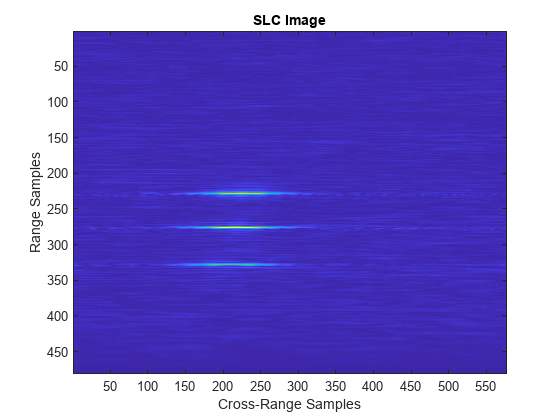rangeDopplerImagerLFM
Syntax
Description
slcimg = rangeDopplerImagerLFM(raw,waveform,fc,v,rc)slcimg generated from raw synthetic
aperture radar (SAR) data obtained using a linear frequency modulated (LFM) pulse phased.LinearFMWaveform
waveform. fc specifies the operating frequency.
v specifies the platform speed. rc is the
radar-to-beam center distance.
Examples
Input Arguments
Name-Value Arguments
Output Arguments
References
[1] Cumming, Ian G., and Frank Hay-chee Wong. Digital Processing of Synthetic Aperture Radar Data: Algorithms and Implementation. Artech House Remote Sensing Library. Boston: Artech House, 2005.
[2] Curlander, John C., Robert N. McDonough. Synthetic Aperture Radar: Systems and Signal Processing. Wiley, 1991.
Extended Capabilities
Version History
Introduced in R2022a
See Also
phased.LinearFMWaveform | rangeMigrationFMCW | rangeMigrationSFM
Topics
- Stripmap Synthetic Aperture Radar (SAR) Image Formation (Radar Toolbox)
- Squinted Spotlight Synthetic Aperture Radar (SAR) Image Formation (Radar Toolbox)
- Synthetic Aperture Radar System Simulation and Image Formation (Radar Toolbox)
